
The world of TV and movie production can certainly appear glamorous from the outside, but it takes an extraordinary amount of hard work and planning to create the final product we all see on screen. And for the small group of aviation companies who are entrusted to help make the magic happen, no detail is too small, or plan too thorough.
One of the premier providers of helicopter and fixed-wing aviation assets and services to the motion picture and TV industry is Studio Wings, Inc., located at Camarillo Airport, about 40 miles northwest of Los Angeles, Calif. One of the company’s key strengths is its owner — Steve Stafford — who has a long and revered history in Hollywood. As a former director and cinematographer, he has extensive knowledge of the industry. This, combined with over 10,000 hours of flight experience in helicopters and airplanes, allows Studio Wings to perform some of the most exciting, yet safe, aviation operations on set.
Another of the company’s strengths is its fleet of “picture” aircraft, which includes an Airbus Helicopters AS350 B3, a Bombardier Global 6000 corporate jet, a Cessna Citation CJ3, a Cessna Caravan, and something that makes it relatively unique in the movie production aviation industry — an Eagle Single. Developed by Eagle Copters of Calgary, Alta., the Eagle Single is a single-engine version of the Bell 212, powered by the Honeywell T53-17B.“We worked with Eagle in detail on how we wanted to set up this aircraft,” Stafford told Vertical. “It would only be used for film production work and not operated as a utility/lift aircraft. The typical Bell medium [helicopter] flown in films is most likely a UH-1 [Huey] variant with restricted or experimental certification — most are self-insured, [but] some are non-insured. That presents a litany of FAA [Federal Aviation Administration], legal, and studio risk management problems when attempting to film a Huey anywhere but in the most sparsely populated locations. Studio Wings wanted to be able to operate a Huey on camera anywhere the production company might request, including downtown areas.”
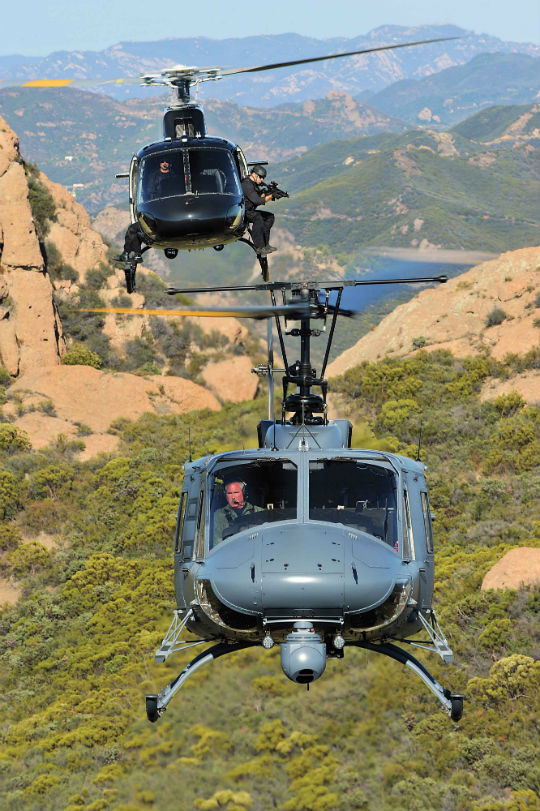
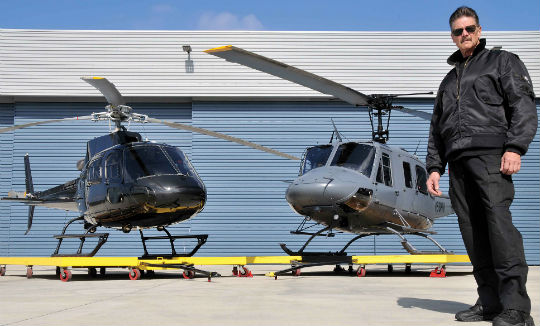
Because the Eagle Single is a transport category aircraft and could be operated on a part 135 certificate, it offered Studio Wings the solution the company was searching for. The Eagle Single is essentially a frame up restoration using commercial Bell parts and a few custom-made Eagle parts, so, for all intents and purposes (and with the exception of the exterior aluminum), it’s a new aircraft. And in terms of performance, the 1,800-shaft-horsepower T53-17B and BLR Aerospace FastFin give the aircraft what Studio Wings needed in terms of power and stability.
For the aircraft’s finish, Studio Wings wanted a more modern, military look, so gave it a “Pave Hawk” special ops grey matte paint scheme, with all black antennas and a Meeker nose mount to hold a non-operational laser targeting forward-looking infrared pod. Stafford said the aircraft’s look of a modern military or government ship lends itself well to a variety of on-screen “roles.”
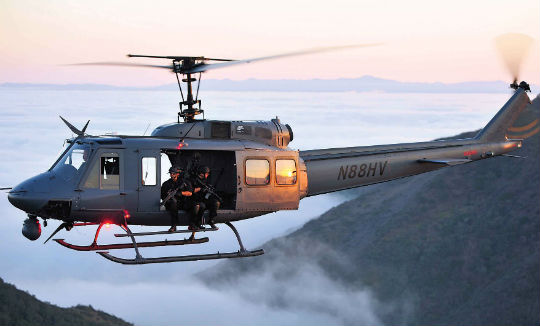
The addition of an Aeronautical Accessories fast rope system gave Studio Wings the ability to insert and extract stunt performers and special operators on film sets with a proven, safe system — and one that had received a supplemental type certificate (STC).
Studio Wings also ordered Eagle’s left-hand pilot-in-command STC, which comes in very handy when filming an actor pretending to start up the helicopter — while the pilot is flying from the left seat. (On a recent shoot, this exact technique was used to make it look like the rapper Eminem was starting up the Eagle Single, before taking off and flying over Los Angeles. In reality, Stafford was doing all the work in the aircraft, remaining unseen in the left seat.)
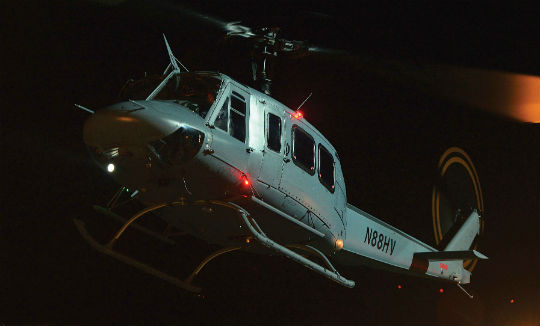
Eagle also installed a custom-made studio audio mixing system in the aircraft, using the Eagle Avionics Systems Generation II G13000 Digital Audio Router as the central brain, and four of its digital transceiver control heads. With this, not only can a film camera power up from a dedicated panel on the left forward side post, but the studio sound technician can also plug in a digital recorder and record an actor’s dialogue from any one (or up to all 10) of the Bose headset ports while in flight. This is a first for a dedicated film production aircraft — and Stafford said the studios love it.
Stafford has been operating the Eagle Single for over a year now, and said he has been hugely impressed with the aircraft’s performance. “Without the second engine and combining gearbox, plus the removal of quite a bit of IFR [instrument flight rules] wiring, the Eagle weighs in empty at a svelte 6,133 pounds [2,782 kilograms],” he said. “With a gross weight of 11,200 lbs. [5,080 kg], we can fill it with fuel, put nine pax aboard, and it’s not even breathing hard. For movie work with just the film pilot and 500 lbs. [227 kg] of fuel, it handles like a nimble Ferrari and could easily climb out at 4,000 feet per minute if the STC allowed it, but it is limited to 2,000 feet per minute for autorotational RPM recovery. The rotor system on this particular bird is ultra-smooth and reflects the overall high quality of work Eagle performed throughout the build process. What’s more, Eagle Copters’ after-sale service has been exceptional, and so far the helicopter has been everything we hoped for and more.”
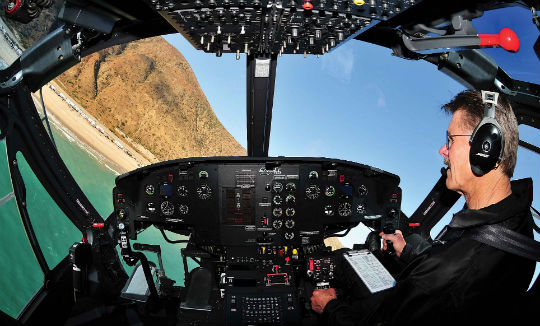
As for the other rotorcraft in his fleet, Stafford said the AS350 B3’s performance margins are very similar to that of the Eagle Single. “The B3 is well known for its hot and high performance, and my experience with it has shown this to be consistently true,” he said. “Its ample engine power and extremely strong tail rotor gives pilots confidence when it’s needed most.”
The AS350 B3 is painted “sinister black” as it’s the most popular color with studios, and can be easily transformed into a police, military or ‘bad guy” aircraft. The company can also have special vinyl wraps and decals made to transform the helicopter into anything a studio might want. If the need arises to get hold of another helicopter type (or fixed-wing aircraft) for a shoot, Stafford said he can usually locate whatever he needs within a matter of hours through his friends in the industry — whether it’s a Robinson R22 or Boeing 747.
Getting the shot
But what’s involved in establishing and conducting a mission in front of (or behind) the camera? Stafford talked Vertical through the process.
A motion picture pilot or aerial coordinator must have an active motion picture operations manual and waiver approved by his or her local FAA Flight Standards District Office (FSDO) in order to fly for the movie studios. The manual allows certain Federal Aviation Regulations to be waived, and defines (among other things) on-set air-to-ground communication, crew safety briefings, removal of “N” numbers, pilot seating positions, and special modifications to an aircraft.

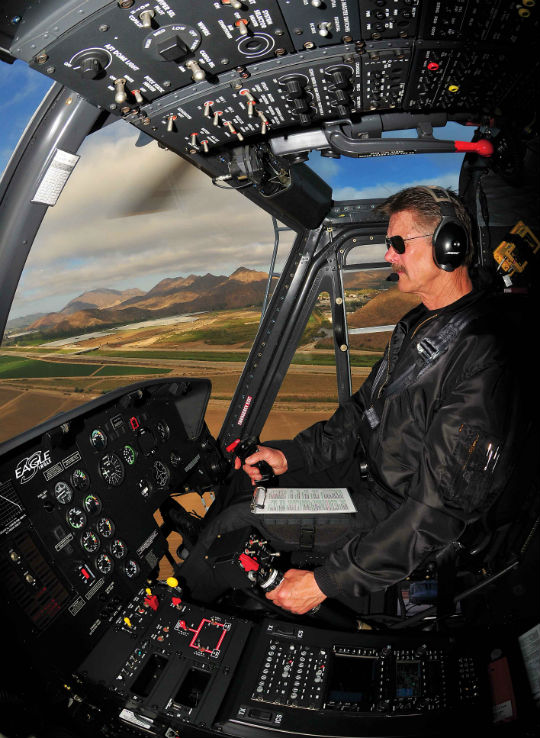
Typically, the aerial coordinator is called in by the film production company weeks before the actual filming begins to ascertain the scope of the proposed aerial filming operations. Once they know the flight parameters, the coordinator will create and submit a plan of activities (POA) to the FSDO that has jurisdiction over the proposed location of the flights. The plan designates the proposed altitudes, flight paths, and emergency landing areas, as well as the means of keeping the general public from the filming event.
Studio Wings uses an outside safety management systems officer to help identify the risks involved in a shoot and to mitigate them to the greatest extent possible. POAs can be one or two pages long for a simple single ship flyover and landing, to as many as 20 pages long for a multiple aircraft mission, flown at night in close proximity to structures or roads. For the operation to be approved, the FAA principal operations inspector assigned to the filming event must be assured that the aerial coordinator has sufficient knowledge, resources, and safety personnel to maintain strict control of the event so that the general public will never be at risk.
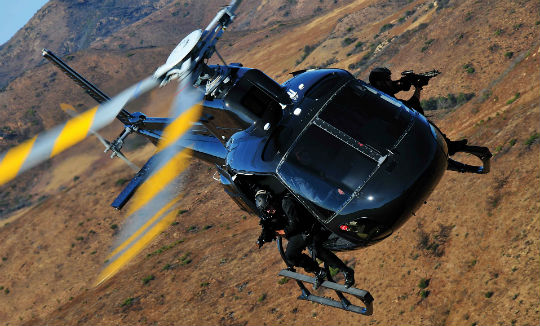
Once FAA approval is granted, the coordinator works with the production company to sign aircraft use agreements for each aircraft involved. Most Hollywood studios attempt to use their own approved contracts, and there is always some back and forth negotiation with a studio’s legal department. Next, the coordinator contacts the aircraft underwriter who is asked to issue additionally named insured certificates with a waiver of subrogation to all corporate entities and municipalities involved. According to Studio Wings, the industry norm is $20 million liability and 100 percent hull coverage, and issuing 10 to 15 certificates on a typical job is not unusual.
Time to fly
With the paperwork, permits, and insurance in place, it’s time to fly. Motion picture pilots are called on to do some very difficult things with aircraft, so a film set is not a learning environment. Stafford said his work in film is 90 percent preparation and 10 percent execution. If he has never performed a scripted maneuver or operation before, he will either practice on his own until he feels he is fully competent, or he will hire someone else who can do it better.

“I can fly long line ops, but I know I can’t do it anywhere near as well as Tommy Hauptman of Pacific Helicopters,” he said. “Humility can make you look good at times, so when a producer steps up and says, ‘Wow! That helicopter guy you hired to sling the de Havilland Beaver under that 200-foot long line is awesome — You’re the man!’ That’s when I humbly take all the credit for hiring him.”
High speed car chases on the deck, flying under bridges or through hangars, or a staged crash landing in a crowed intersection between moving stunt drivers can certainly be demanding, but a cautious film pilot never flies those maneuvers solo. His or her ground safety crew is an integral part of the flight team, constantly keeping watch and ensuring the pilot, the film crew, and the actors below the flight path are kept safe. Stafford’s ground crew is always present for the formal FAA-required safety briefing to answer crew questions and to ensure all those who are flying are briefed and buckled.
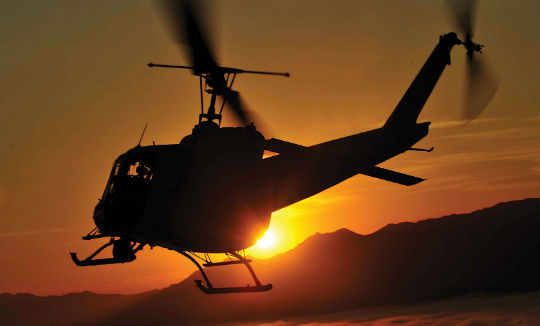
The blades don’t turn and the cameras don’t roll until the ground crew gives a unified radio call that all is secure. Set safety comes down to the same thing that all good helicopter pilots need — situational awareness. For Stafford, that encompasses every detail of the shoot, from the first phone call to the final wrap. He uses his knowledge as a former film and TV director to always give the director on set a better, safer way to get the shot he or she wants without undue risk.
Stafford’s knowledge of lens composition and focal lengths allows him make suggestions that can visually compress two aircraft that may be 100 feet apart to make them appear to be right on top of each other.
“No film is worth a person’s life,” he said. “There is always a safer way to do it.”
With only a handful of FAA-approved companies working in the TV and movie industry, aircraft production work is highly competitive, but with its unique fleet and extensive production knowledge and expertise, Studio Wings should be around for years to come.





